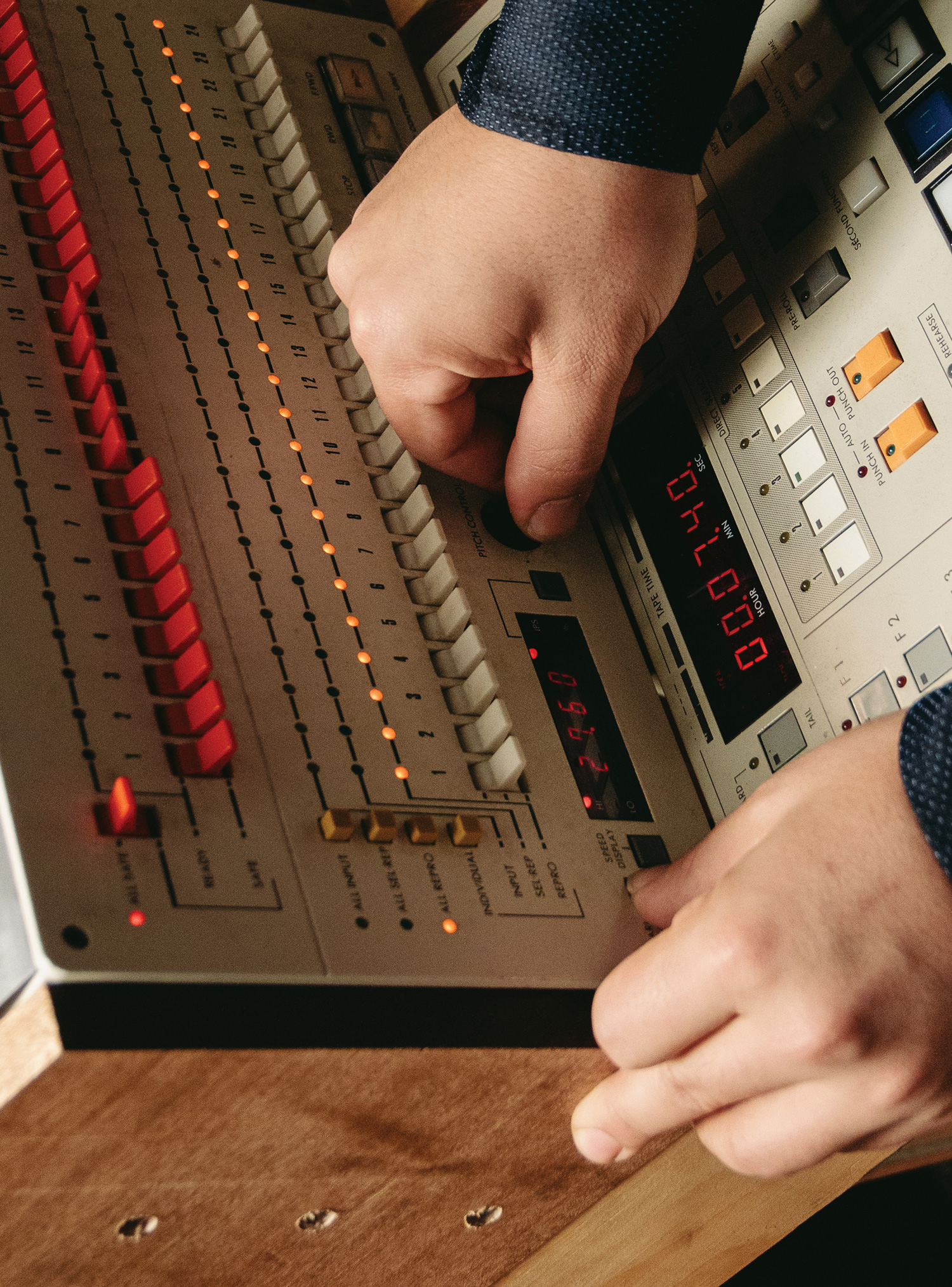In my review of the Blue Mo-Fi headphone [Tape Op #105] last year, I stated that it was the most innovative headphone I'd ever seen. Lola is the new, younger sibling of Mo-Fi. It shares the same custom-made 50 mm drivers and overall design of its older sibling, but its feature set has been slimmed down. Most importantly, Lola is passive; it doesn't have an onboard amplifier like Mo-Fi does (nor does it have Mo-Fi's analog EQ circuit that can be switched on for an extra bass bump). Without the amplifier, Lola doesn't need a battery and associated charging circuitry. Lola also forgoes the headband tension adjuster for a lower profile headband with spring tension that's factory set. All of these changes mean that Lola is significantly lighter in weight and lower in price than Mo-Fi. Otherwise, the same, unique, multi-articulating headband that was inspired by the double-arm suspension designs of Formula One racecars, along with super-plush earcups that are shaped to fit perfectly around actual ears (something that other headphone manufacturers still haven't figured out), result in a very comfortable fit. (Read my Mo-Fi review for more commentary on the revolutionary aspects of the design.) In fact, with lower weight, and therefore, with less headband tension needed, Lola ups the ante in terms of long-term comfort.
What about the sound? The reduction in headband tension and a slight change in earcup shape result in Lola's bass energy being less pronounced than Mo-Fi's. (Let me remind us that we all have different head-shapes and ears, so we're all going to hear headphone models differently.) To my ears, Mo-Fi's bass is emphasized with a +5 dB shelf from 200 Hz on down. Lola's bass response, on the other hand, is akin to a +2 dB shelf. The rest of the frequency spectrum sounds the same between the two models, with a slight bump in energy at 4—6 kHz, an attenuation of a few dB from 7 kHz on up, and a shallow roll-off that begins at 14 kHz. Importantly, distortion is very low, especially in the critical midrange region from 300 Hz on up. Moreover, when driving either of these headphones with a high-quality source, I can clearly hear fundamentals even down to 20 Hz, where all of my other headphones are struggling to play back anything but harmonic distortion. To put it succinctly, Mo-Fi has the clearest and least distorted bass reproduction of any headphones I've auditioned, and Lola comes a very close second, but Lola's presentation across the whole frequency spectrum is better balanced. I actually prefer the sound of Lola over Mo-Fi — for both critical listening in the studio and casual enjoyment of my music collection at home. (With that said, Mo-Fi's onboard amplifier offers a huge improvement in sound quality when listening through the anemic amps of mobile devices.)
Two cords are included with Lola — 4 ft and 10 ft long — both of which are straight and flat (like linguine), which makes them nearly impervious to tangling. The shorter cord is equipped with an inline mic and playback controls. Both cords have skinny 1/8'' ends, and either end will click almost fully into the jack on the left earcup of Lola, or plug into the jack of a mobile phone, even if the phone is protected by a case with small apertures. A 1/4'' adapter is included, and smartly, the 1/8'' plug also goes deep into the adapter, so the end of the cord remains low in profile — very cool. A nicely sewn, vinyl velour bag is included, the main compartment of which has a flap with a magnetic closure. Inside is a secondary pocket for storing the unused cord and adapter. What I recommended in my Mo-Fi review is still relevant with the new Lola. Don't buy these headphones if you need help hunting down sibilance and other high-frequency anomalies. Do buy these headphones as a complement to nearfield studio monitors, even if you have a subwoofer; unless your room has perfectly tuned bass-trapping to rid it of all resonances, you're hear more accurate bass through these headphones. A year after writing my Mo-Fi review, I can now say that Mo-Fi and Lola are the two most innovative headphone models I've ever seen or heard. Put them on your shortlist if you're considering a headphone purchase.




_disp_horizontal_bw.jpg)